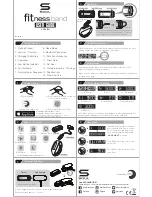
38
Grammar
In recent years grammar has begun to enjoy greater prominence than in previous
decades. It is once again being taught explicitly in state schools throughout Britain
and elsewhere. In addition there is a recognition that different meanings of a word
are closely associated with different lexical and syntactic patterns. The
Oxford
Dictionary of English records and exemplifies the most important of these patterns
at the relevant senses of each word, thus giving guidance on language use as well
as word meaning.
For example, with the word
bomb
, it is possible to distinguish the main senses of
the verb simply on the basis of the grammar: whether the verb takes a direct object,
no direct object, or no direct object plus an obligatory adverbial:
CORE SENSE: attack *(a place or object)* with a bomb or bombs:
EXAMPLE: they bombed *the city* at dawn.
GRAMMAR: [with obj.]
(the asterisks match the direct object in the example with the bracketed item in
the definition)
CORE SENSE:
Brit. informal move very quickly:
EXAMPLE: we were bombing *down the motorway* at breakneck speed.
GRAMMAR: [no obj., with adverbial of direction]
(asterisks show adverbial in example)
CORE SENSE:
informal (of a film, play, or other event) fail badly:
EXAMPLE: it just became another big-budget film that bombed.
GRAMMAR: [no obj.]
This has particular relevance for a dictionary such as the
Oxford Dictionary of
English, where the aim is to present information in such a way that it helps to
explain the structure of the language itself, not just the meanings of individual
senses. For this reason, special attention has been paid to the grammar of each
word, and grammatical structures are given explicitly.
Where possible, the syntactic behaviour of a word is presented directly: for
example, if a verb is normally found in a particular sense followed by a certain
preposition, this is indicated before the definition, in bold. For an example, see
build
(
build on
).
In other cases, collocations which are typical of the word in use, though not
obligatory, are shown highlighted within the example sentence. For examples, see
cushy
(
a cushy number
) and
end
(
ended up in, end up with
).
Great efforts have been made to use a minimum of specialist terminology.
Nevertheless, a small number of terms are essential in explaining the grammar of a
word. The less familiar terms are explained below. All terms are, of course, defined
and explained under their own entries in the dictionary.
Terms relating to nouns
Nouns and senses of nouns are generally categorized in this dictionary as being
either
[mass noun]
or
[count noun]
. A mass noun is one which is not ordinarily
found in the plural and is not used in the singular with the indefinite article ‘a’ (it is
normal to talk about ‘bacon’, for example, but not ‘a bacon’ or ‘three bacons’), while
a count noun is one which can be used with the indefinite article ‘a’ and can take a
plural (e.g. shirt, shirts).
For examples of mass nouns, see
bacon
,
badminton
and
banking
. By default all
nouns in this dictionary are to be regarded as count nouns unless stated otherwise.
The label
[count noun]
is used to mark those nouns and senses of nouns which
can take a plural where this is in contrast with an already stated mass noun. For
examples, compare the core sense and subsenses at
ballet
and
brokerage
.
However, there are particular groups of mass noun that can take a plural form in
certain circumstances, for instance when referring to different types of something
such as food (as in
the panel tasted a range of cheeses). For reasons of space,
such uses are recorded in the
Oxford Dictionary of English only when they are
particularly important. Some categories of mass noun that can take a plural
(although this may not be explicitly stated in the dictionary) are given below. The
Oxford Dictionary of English is the official dictionary of the television word game
Countdown, and the following list may be helpful for people who enjoy the
programme:
Содержание PW-E500A
Страница 18: ...this a splayed It esired English plete than yed u may wish n pages ...
Страница 23: ...22 en of the f Quotations on the first or e to be viewed by n on pages ...
Страница 28: ...specify the nd e view after t screen mes by ...
Страница 58: ...appens relates e use of s yword can enter ture a h can then ...
Страница 59: ...58 ...
Страница 60: ...RP CORPORATION PRINTED IN CHINA 05EGK TINSE0832EHZZ ...
















































